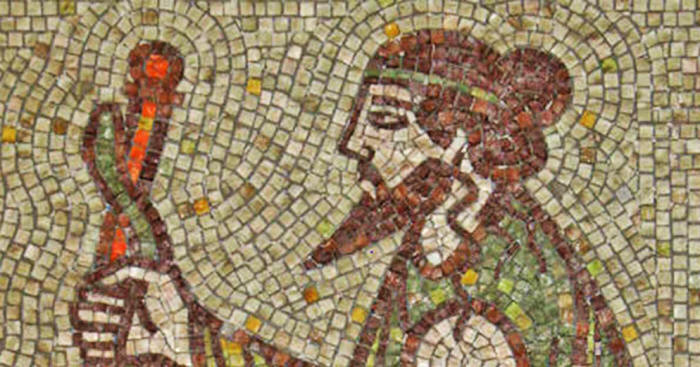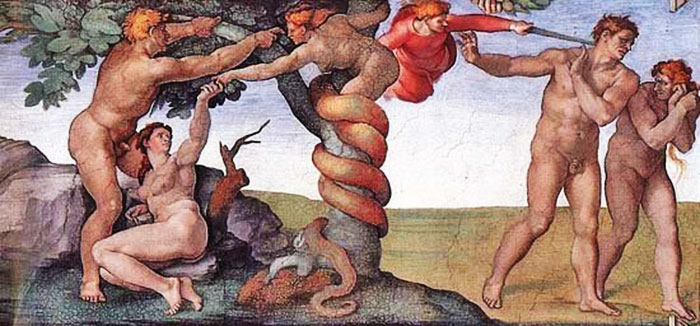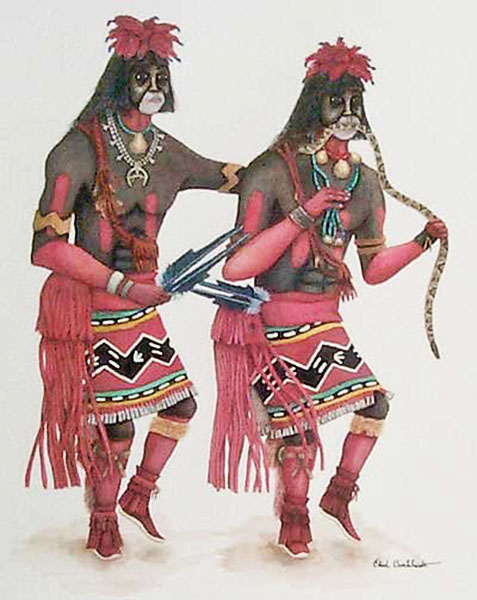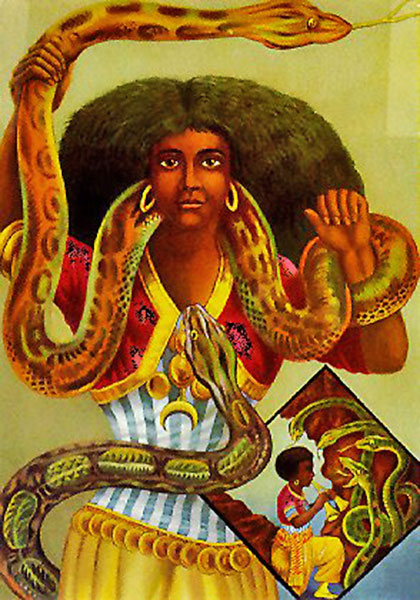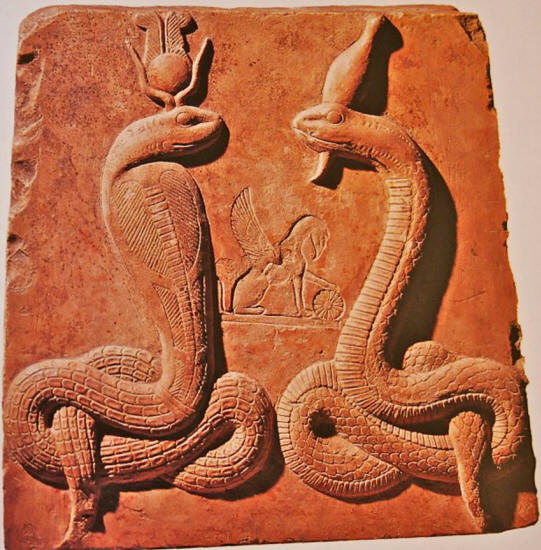|
by Leonard Farra June 25, 2019 from AncientPages Website
For thousands of years, in many ways, the serpent has played a role in religions, folk customs, and superstitious beliefs.
And if flying snakes
are a mystery what can we make of a North American Native legend
which describes a struggle between man and a snake people that
resulted in the aliens destroying mankind with a flood?
The indications,
therefore, are that what might seem to be an odd story was part of a
5,000 year old series of legends which told how civilizing gods from
the Pleiades (Alcyon)
taught man agriculture, and useful arts, but later destroyed an evil
people with a flood.
As I have previously explained, legend has it that he had the appearance of,
According to some of the
legends, he was involved with a flood or he caused one.
Most scholars, who have
studied the Spanish chroniclers' reports, fail to appreciate the
deeper significance of Aztec religious beliefs.
Initiates, and priests, in that religion, used geometric and animal symbolism to express their beliefs and the animal most commonly used, the snake, was a major feature in Aztec religious symbolism.
People in Mexico also
kept live ones in their homes. In Central America, and in some of
the northern native cultures, the rattlesnake was sacred and it
frequently appeared in religious architecture.
They worshipped him as a
god and he played a major role in their religion. Some scholars call
him a serpent-god because of his name and because the Aztecs
portrayed him looking out from the mouth of a snake.
Why was the god's return associated with a comet?
The answer appears to be that he was linked with a serpent and in Mexico, comets were called 'flaming serpents:'
The Inca civilization, in Peru, was in existence at the same time as the Aztecs and, like the Mexican people, in the North, the Incas also followed a Pleiades linked sky-god religion.
The Incas called their civilizer Viracocha and his description is the same as that of Quetzalcoatl because they were the same 'person'...
Viracocha appears to have been linked with a serpent because when Pizarro arrived in Peru, with his companions, the Incas thought that the white god had returned and so Atahualpa, the Inca ruler, arranged to meet him in the Serpent Temple at Cassamarca where there was a stone serpent.
There were effigies of
serpents on many Inca buildings and Viracocha was depicted holding
twin serpent staffs.
The Coricancha carvings may be fairly recently.
According to another version, a great serpent tried to destroy the human race, with a flood, but help came in the form of Maniboza (Michabo) who was sent to earth teach the Ojibwe agriculture and various arts.
Maniboza seems to have been called 'The Great White Hare' because of his brilliant white appearance and he was, apparently, a counterpart of the civilizing gods Quetzalcoalt and Viracocha.
The horned serpent, which is mentioned in several North American Native legends, was originally a symbol in the Mississippian culture. It was regarded as benign or benevolent and it was also associated with wisdom and healing.
There are effigies of it
in rock art such as at Pony hills and Cook's Peak. Some of the most
intriguing rock art, however, is in the area around Barrier Canyon,
in America's South West, where serpents are shown with tall,
strange, figures.
The Ohio mound is aligned to the summer solstice sunset and the winter solstice sunrise.
At the Hopewell site of Fort Ancient, the solstices are marked by two serpents. Were rituals, re-enacting the return of a snake-linked god, celebrated at these, and other North American sacred sites, on those days?
In Canada there is the
Serpent Mounds Park which received
this name because its largest mound zigzags like a snake.
According to the North American Natchez Indians, their civilizer, who was accompanied by a woman, gave them a set of rules. This being was so bright that the Natchez thought that he came from the Sun. The Natchez chief was named after him and he was called The Great Sun.
The Natchez apparently
believed that the sun was linked with a snake for nobles were
tattooed with suns and serpents. Furthermore, the Great Sun's
brother was called Tattooed Serpent and on altar in the
Natchez temple there was a rattlesnake carved from wood.
The Spaniards may have watched Aztec serpent dances and their chroniclers might have been told that Ciucoatl, the Aztec mother goddess, was a snake woman, but it's hardly likely that they would have known that gods and goddesses, throughout the Early World, were associated with a serpent.
Sumeria's mother goddess, Ninlil, for example, was known as 'The Snake Lady' and some goddesses were reputed to be half woman half snake.
According to legend,
Lisbon, the former kingdom of Ofinsu, was ruled by
gigantic serpents and its queen was half woman half serpent.
At the circular Priory Mount, at Lewes, Sussex, England, a spiral path, in the form of a serpent, winds its way up, and around, the mount with its head resting on the summit.
As the mount has a summer solstice alignment,
The Celts arrived in Ireland around 2,500 years ago and there were more snake traditions in that country than in any other one in Europe.
The Celts had many gods and goddesses but, in Western Celtic religious beliefs, the two most important ones were the sun-god Hu, whose symbol was a serpent, and his wife Ceridwen - the mother of the world.
When he visited Earth,
and interacted with humans, Hu taught them how to plough and he
also, reputedly, founded Stonehenge.
The Druids seem to have believed that snakes could fly for the Natural History of Pliny states that when they coil themselves into a ball, in summer, and cast it into the air, the Druids catch it in a cloak without letting it fall to the ground.
The Pleiades also played a major role in Celtic tradition and when they appeared, on 1 May and 1 November, they celebrated their two main festivals:
Serpent traditions, and
customs, had been popular in Europe for thousands of years and, to
finally eliminate them, in the 12th and 13th
centuries
the Church proclaimed that a local
saint, such as St Patrick in Ireland, had driven them into the sea.
Ever since that time, in memory of what the saint had achieved, it's become customary for bare-footed Irish pilgrims to climb Croagh Patrick, in County Mayo. However, in spite of all the efforts of the Church, some Europeans hung onto their snake traditions.
In Prague, in the 15th century, some people were still offering sacrifices to serpents and others kept live ones in their homes.
Excavations at Knossos, in Crete, in 1903, uncovered figurines of a serpent goddess holding a snake in each hand and serpent dances remained popular in Greece, and other parts of Europe.
They still are in Helston,
Cornwall, England, in the form of the Furry Dance.
It was also associated with healing and as early man's 'visitors' were linked with a snake, a snake encircled staff was associated with Asclepios, the long-robed, bearded, Greek god of medicine.
People went for healing
to his splendid Epidaurus Temple where live serpents were kept in a
circular enclosure. Asclepios' symbol was adopted by the medical
profession.
There were also serpent
cults in Ancient Rome.
White has long been associated with purity.
White animals were sacred in parts of the Early World and some people placed special importance on the white snake.
In Japan, the white snake
was a messenger of the gods and in China, Lady White Snake is a
popular legend.
In Dahomey, a hundred and
fifty years ago, sacred snakes were kept in a 'circular, whitewashed
hut' and a person who dared kill one was put to death. A python
represented the Baganda god Selwanga, who had his own
priests, and huge open-jawed bronze pythons were depicted winding
their way down pillars on the palace towers in the former powerful
West African Kingdom of Benin.
The serpent was also revered by the West African Ashanti but the most incredible snake traditions, in the whole of Africa, are those of the Dogon, in Mali, which are linked with Lebe - their civilizer.
Lebe, the oldest man in the world, had the appearance of a bearded man and he carried a long straight staff.
Lebe is associated with 'one' of a group of several serpents and, like his Aztec counterpart, Quetzalcoatl, on the other side of the Atlantic, he was reborn from its mouth.
According to a Dogon
tradition, when the Great Nommo, or probably his Ark, was
descending it resembled a flame but when it touched down on Earth,
its color changed from red to white.
Wherever the Dogon originally came from, their mystical serpent traditions appear to be related to Sumeria's Annunaki.
Five thousand years ago, in Sumeria, Enlil, the Anunnaki leader, was called a serpent and Ea/Enki/ the Sumerian civilizer, who appears to have been shown holding a 'flaming disc', was associated with a snake and the Flood.
The serpent featured in numerous early Middle Eastern legends, and traditions, and,
Another Early World civilizer, Egypt's Osiris, whose origin was reputedly in the Pleiades, was later made the Egyptian God of the Dead.
In the late New Kingdom,
he was shown seated on a throne on the back of a huge snake whose
body is draped over a stepped-pyramid and its head is held high. The
pyramid represented the World Mountain, or First Land, that rose
from the surrounding water at the time of the Creation.
The World Mountain is also represented by the moat surrounded Angkor Wat, in Cambodia, which was built in the early years of the 12th century and whose entrance is guarded by legendary multiple serpents.
The latter appeared in legends,
Serpent worship was common in Southern Asia for thousands of years and the cobra was widely used as a religious symbol.
Effigies of it were
depicted on temples and traditional serpent dances are still popular
in parts of India. There were also snake traditions in China which
has the Year of the Snake.
Isis as Agathe Tyche and Osiris as Agathos Daimon,
both in serpent form.
A disc, or sphere, balanced on the head of a cobra had similar powers and this symbol was depicted on the hems of royal garments.
Its thought that a sacred
serpent was kept in Egyptian temples and in the Egyptian
Papyrus of Ani, a fire-breathing
one, Khati, was said to attack the enemies of Osiris.
The snake appears in
Aboriginal traditions in the form of the Rainbow Serpent and
there are many drawings of it on rocks and in caves.
Eastern Australian Aborigines call him Baimi and his return to Earth was celebrated in huge earth circles the plan of which is remarkably similar to that of the earliest phase of Stonehenge in England.
The highly regarded
adventurer/scholar, Thor Heyerdal demonstrated that early
people could have made long sea voyages and that there were contacts
between different cultures.
...and people everywhere celebrated with serpent dances.
The early folk also associated this animal with their gods, and goddesses, but more significantly, with a bearded male civilizer who carried a staff and who was linked with the Pleiades.
There were numerous versions of the serpent linked sky-god religion in the Early World.
Most of them were suppressed by the Church and only a few survive.
|


